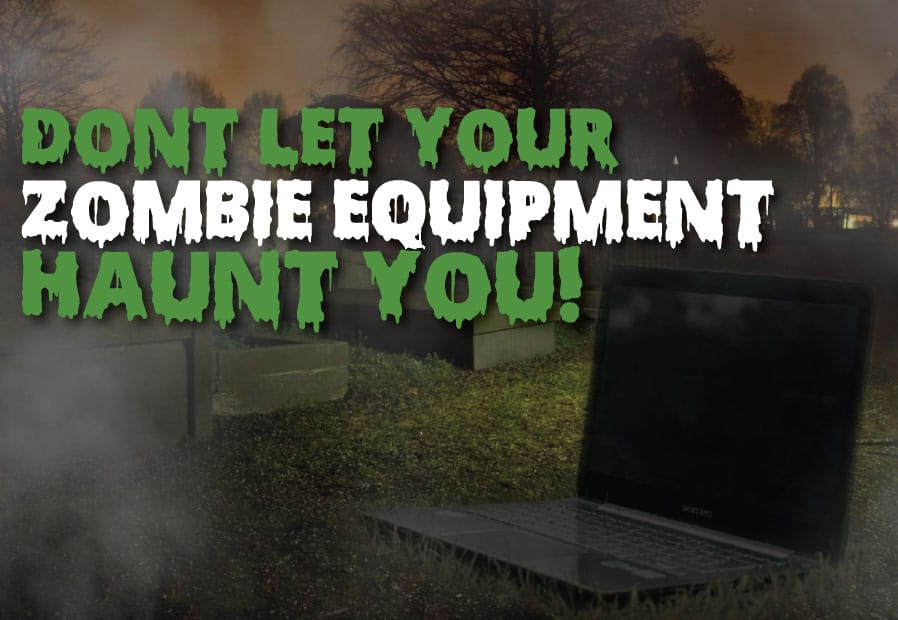5 ITAD Mistakes To Avoid with your Zombie Devices

When companies are ready to resell or recycle their used IT equipment, often times they are more concerned with the acquisition of modern equipment than the fate of their outdated devices.
The problem is that old electronics can easily come back to haunt you, whether they’re gathering dust in a storeroom or sitting at an empty desk. If they’re online but not getting updated regularly, hackers could find a way into your network. If they’re in storage, they pose a temptation for theft and quickly lose the potential for resale value.
Either way, the end result could lead to data breach and identity theft that threatens your company and your customers. If you want to protect your business against these threats, there are a few common zombie equipment mistakes to avoid.
1. Don’t Forego End-of-Life Planning
While plenty of companies plan for their next IT upgrade and even map out the life cycle of equipment, they fail to put plans in place for equipment and devices that are damaged, outdated, or otherwise unusable. You know you can’t just throw it away, but a back-burner approach isn’t the solution. You need to create policies and procedures for decommissioned IT equipment so that it is properly inventoried and quickly removed from the premises for disposal by reliable professionals.
2. Take Ownership of Responsibility
As part of your ITAD plan, you need to ensure that someone is responsible for decommissioned equipment and devices. Whether you turn the task over to a facilities manager, an IT professional, or the company CTO, the buck has to stop somewhere, and one single person or department needs to take ownership of this important responsibility.
3. Be Aware of Compliance
If you’re planning to manage IT asset disposition on your own, you really have no choice but to remain aware of the environmental and consumer privacy laws that apply to your business. This could include federal, state, and/or local laws, as well as industry specific regulations, like HIPAA for medical records or FACTA for financial information. The easier alternative is to work with a certified ITAD service provider to manage these concerns on your behalf. Just as you rely on a CPA to file your taxes, you can hire an ITAD professional to handle your disposition needs.
4. Don’t Neglect Downstream Vendors
Whether you’re doing it yourself or you’re using a third-party vendor to do it for you, you need to exercise due diligence when it comes to proper IT equipment disposal. This includes making sure whoever gets their hands on your old equipment and devices is disposing of it properly. By keeping with all applicable laws, rather than dumping it in landfills, selling it online containing data, or shipping it illegally overseas, you will avoid any violation of environmental or consumer privacy and data security laws.
5. Don’t Choose the Wrong ITAD Partner
When it comes to choosing an ITAD vendor, it is critical that you look for verified certifications like e-Stewards and R2 to ensure they submit to third party audits and meet all legal compliance and security regulations for the highest level of service. You want a partner that secures your devices at every turn, offers transparency with a 24/7 client portal, and provides you with proven Certificates of Destruction and Recycling for your records when the job is done.
When your South Dakota or North Dakota business needs security, compliance, and peace of mind, contact SEAM at 605-274-7326 (SEAM) or online to request a quote.
SEAM provides IT recycling and data destruction services including onsite shredding and hard drive wiping to South Dakota, North Dakota, Minnesota, Iowa, and Nebraska.
Schedule a pickup or contact us for more information.





